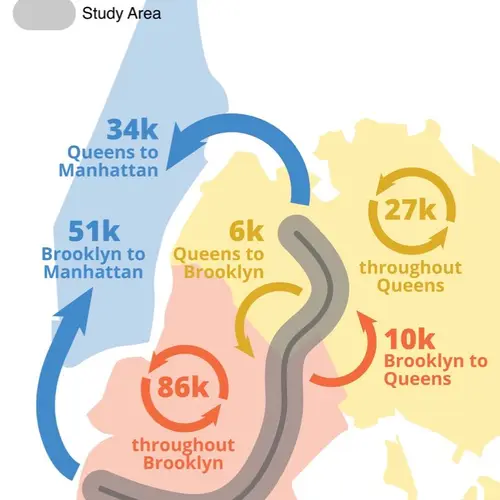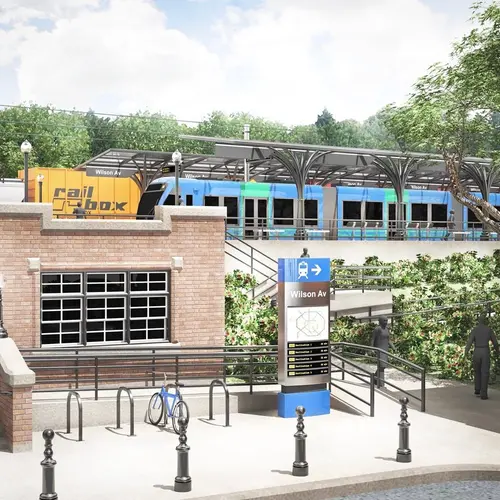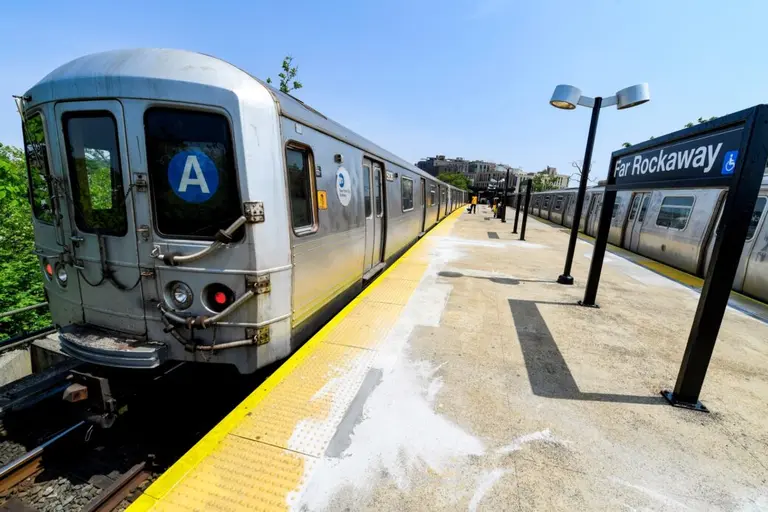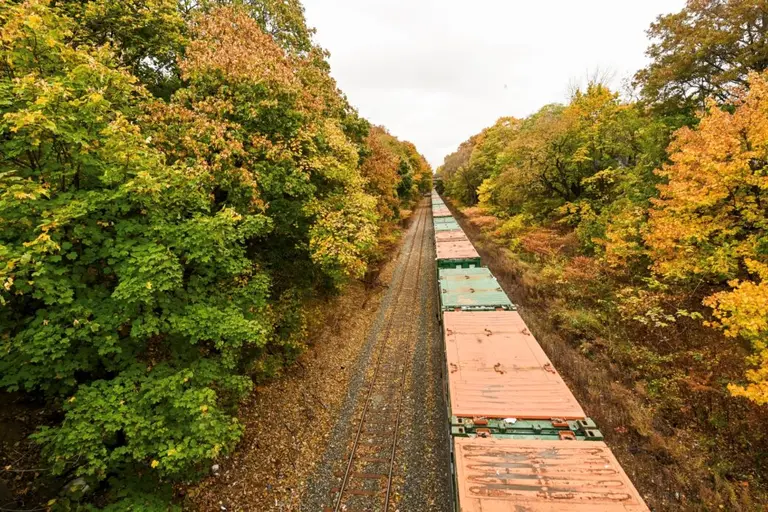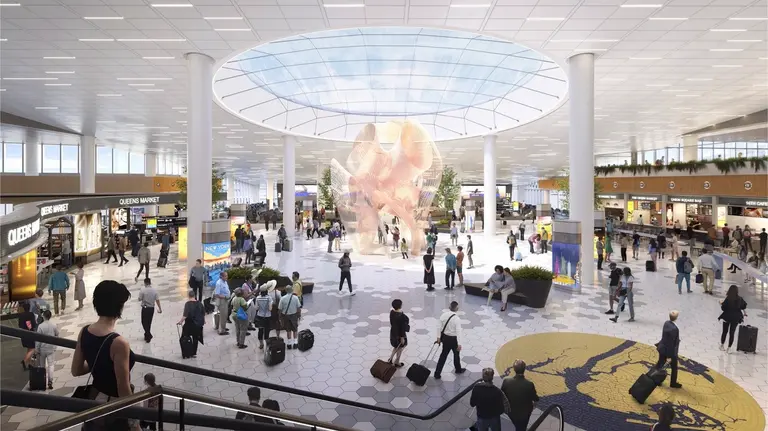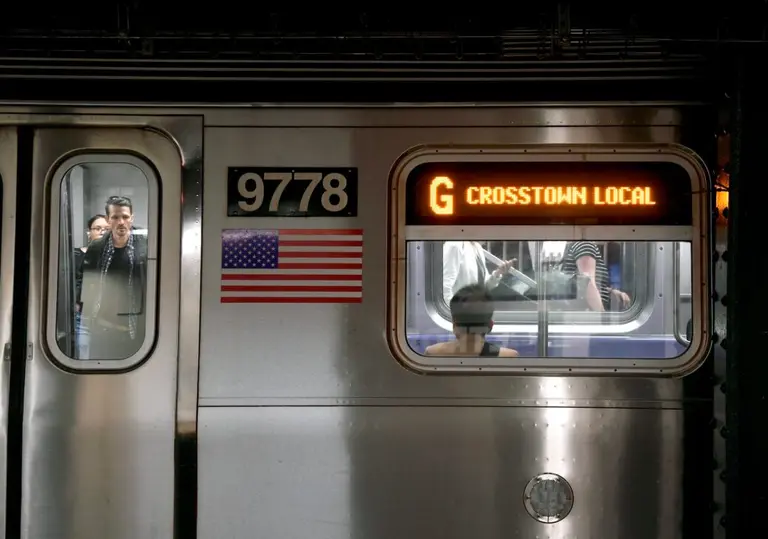14-mile ‘Interborough Express’ route between Brooklyn and Queens moves forward
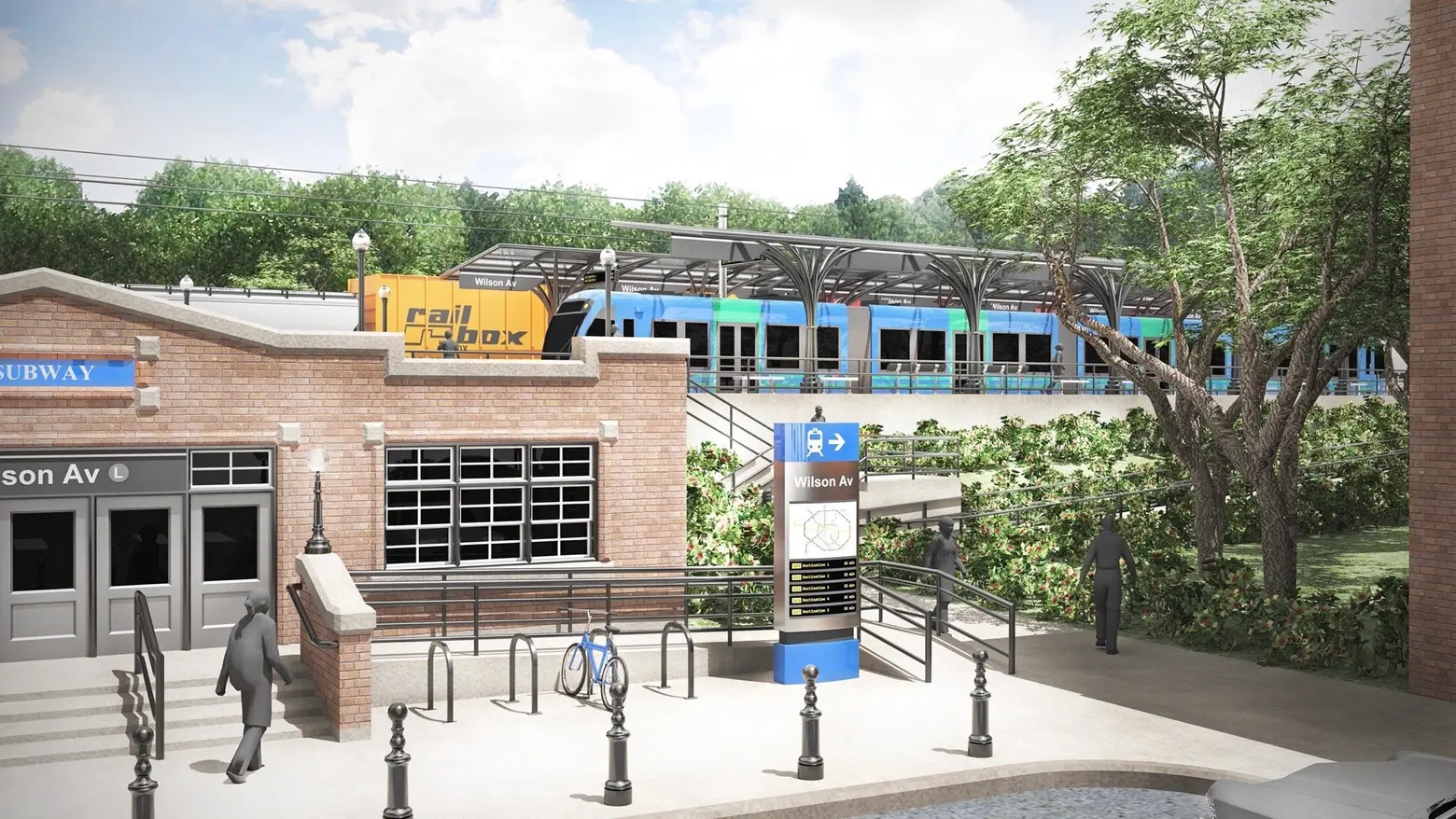
Image courtesy of Gov. Kathy Hochul’s Office
A public transportation project that could ease the lives of thousands of New Yorkers is gaining momentum. Gov. Kathy Hochul on Thursday announced the completion of a feasibility study for the Interborough Express, moving the project into its next phase of development. The feasibility study yielded promising results, revealing that the new line could serve anywhere between 74,000 and 88,000 riders a day while connecting to 17 subway stops and the Long Island Rail Road. From its start in Bay Ridge to its final stop in Jackson Heights, the route would take 40 minutes.
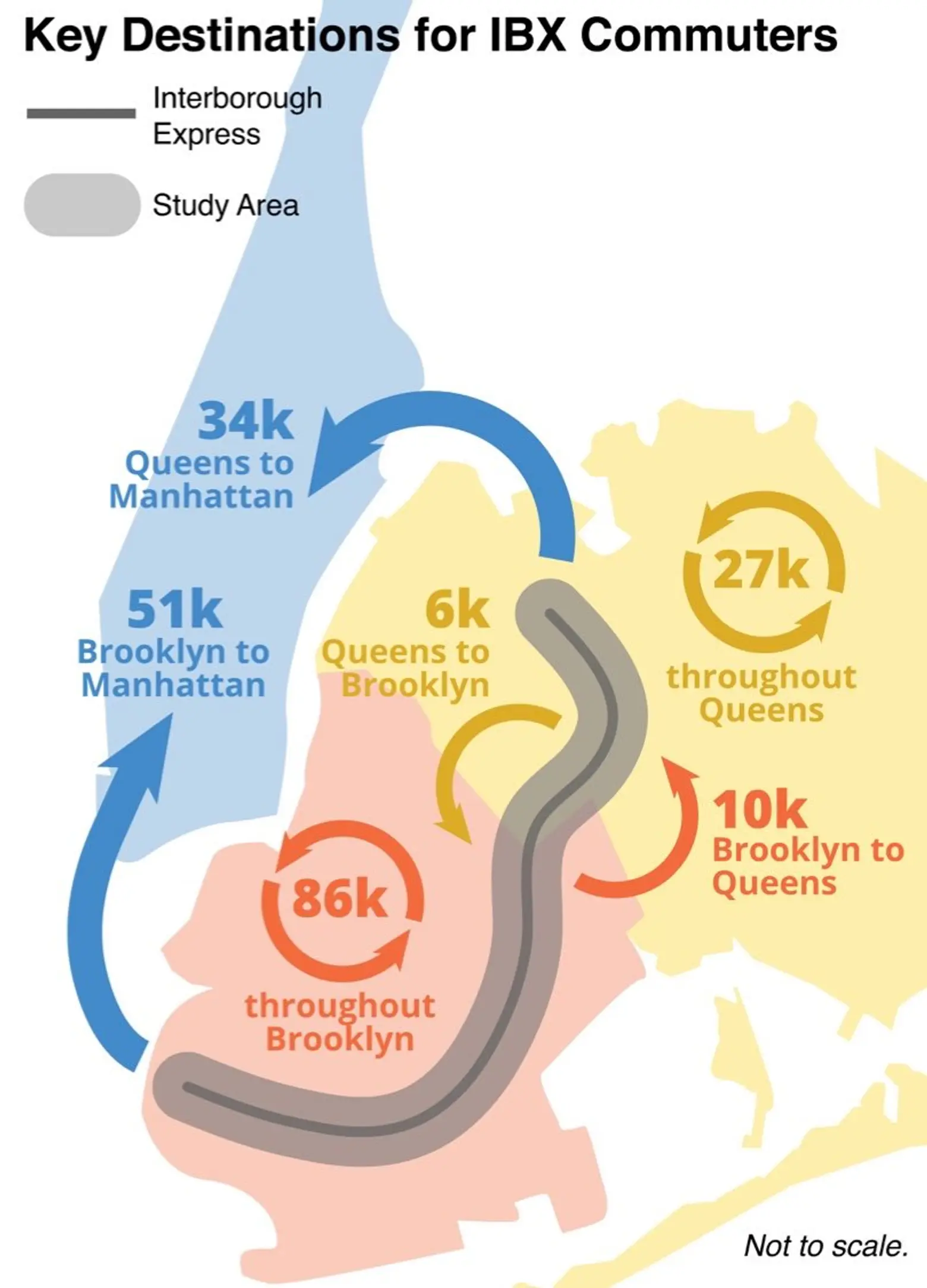
Using the existing right-of-way Bay Ridge Branch rail line that already runs through Brooklyn and Queens, the Interborough Express would alleviate massive transit deserts found across the two boroughs. As the feasibility study found, in many of the neighborhoods the line would run through, “71 percent of residents are minority and 33 percent are below the federal poverty line.” According to the study, more commuters travel between Brooklyn and Queens than they do to Manhattan.
“Infrastructure is all about connection, and with the Interborough Express we can connect people to their family and friends while also improving their quality of life,” Hochul said. “The Interborough Express will connect Brooklyn and Queens, not only shaving time off commutes but also making it easier to connect to subway lines across the route. With the completion of the feasibility study, we can move forward to the next phase of this project and bring us one step closer to making the Interborough Express a reality for New Yorkers.”
The proposed service would operate with five-minute headways between trains during peak hours and 10-minute headways during off-peak hours. The route will run through a number of socioeconomically diverse neighborhoods, with the precise number and location of stops still to be determined.
“MTA riders deserve a reliable and wide-reaching transit system that promotes equity, and this study proves The Interborough Express will provide better access to jobs, education and economic opportunities for some 80,000 New Yorkers in Queens and Brooklyn,” MTA Chair and CEO Janno Lieber said. “I want to thank Governor Hochul for her leadership on this exciting project and look forward to working with local communities to get work underway.”
The study also revealed that the new line could work in tandem with the Cross-Harbor Rail Freight Tunnel project, which would connect New York City to the nation’s freight rail grid. This would alleviate traffic caused by trucks, whose cargo could instead be carried on the freight line, according to the study.
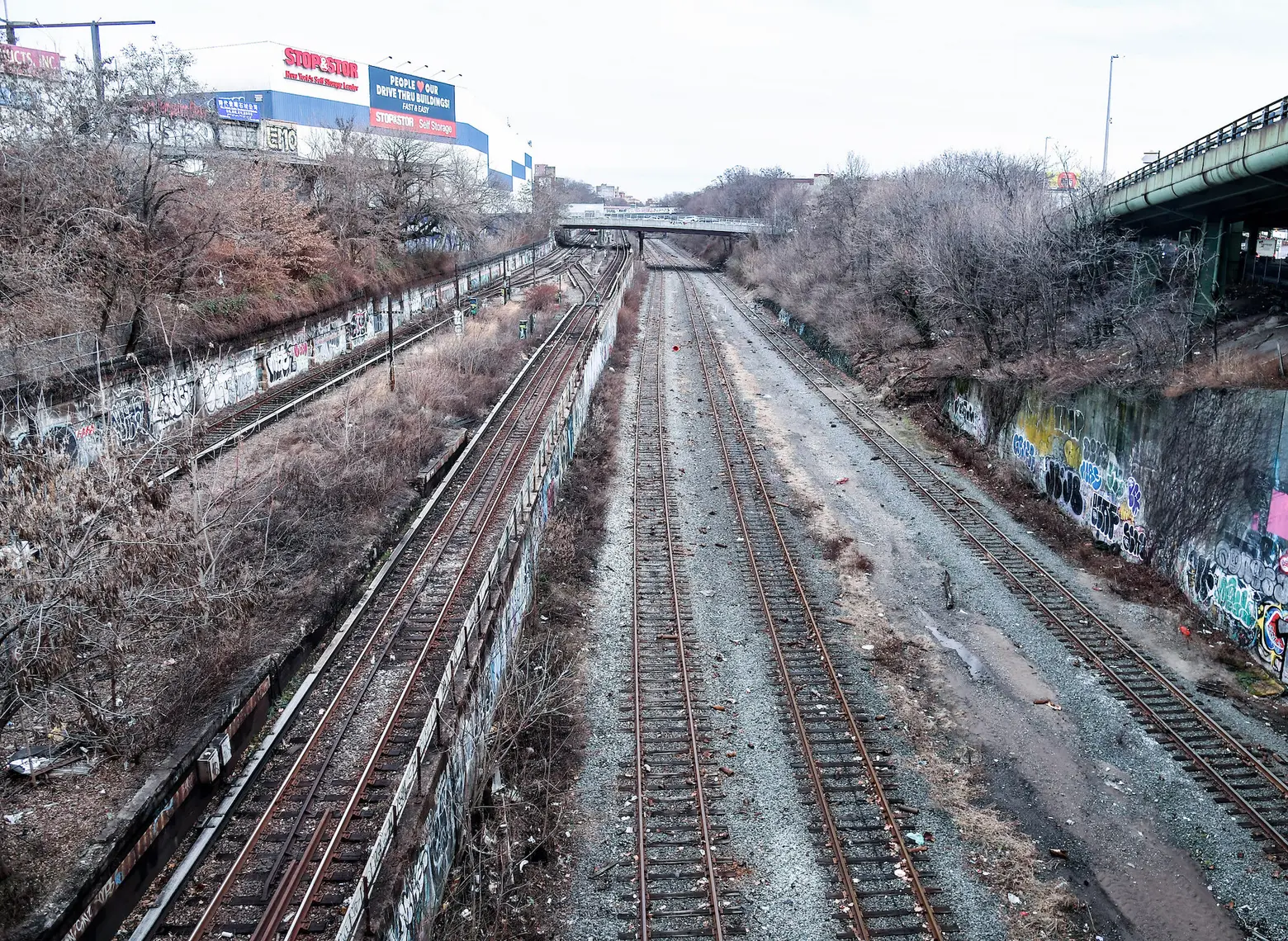 View of the Bay Ridge Branch from below 5th Ave. Image courtesy of Marc A. Hermann/MTA on Flickr
View of the Bay Ridge Branch from below 5th Ave. Image courtesy of Marc A. Hermann/MTA on Flickr
“The Interborough Express is an important project that has the potential to expand transit access to underserved neighborhoods in Brooklyn and Queens,” Rep. Jerry Nadler said. “This project can and should co-exist with the Cross Harbor Rail Freight Tunnel project which would finally connect the New York metropolitan region to the national freight rail grid by removing trucks from our streets and diverting them to the underutilized rail network. Together, these projects will improve transportation equity and reduce carbon emissions.”
The next steps in the development process will require the MTA to conduct the necessary state and federal environment review processes, using input from the public to create a more accommodating system. Transit officials are still determining which type of rail system would be most efficient, whether it be Bus Rapid Transit, Light Rail, or conventional Heavy Rail.
Bronx residents have been given the short end of the stick, as it appears that an extension into the Bronx outlined in the Regional Plan Association’s Triboro proposal didn’t make its way into the MTA’s feasibility study.
The price of fares for the Interborough Express is anticipated to be equivalent to standard subway fares, but it is up to the MTA’s board to determine the price when the project is closer to completion. While there is no official end date, Lieber stated that once construction begins, the project could take “three to five years” to complete.
RELATED:
